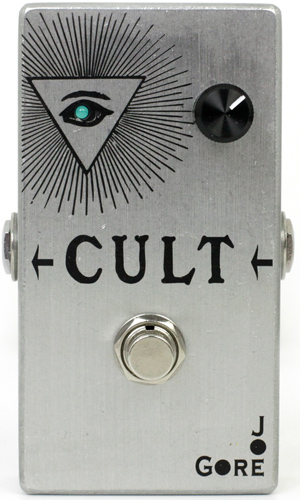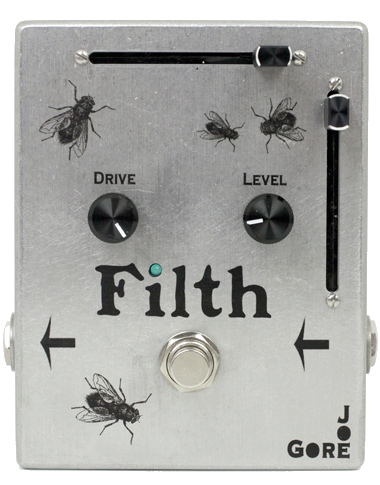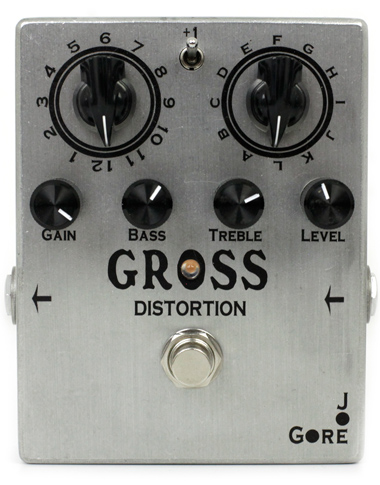Joe Gore is obsessed with stompboxes whose tones change according to touch, technique, and guitar settings. Some players prefer effects that compress and smooth their sound for more consistent and predictable results. That's cool, but Joe would rather expand the guitar's dynamic range.
Circuits from the 1960s and '70s are often his jumping-off points, but he usually jumps pretty far. No clones here.
Example: As a single-germanium-transistor overdrive, Cult Germanium Overdrive has roots in the geranium boosters of the 1960s, though the apple has rolled far from the tree. The tone curve suits everything from a sizzling Tele bridge pickup to a woolly neck humbucker. The gain control operates in a novel way, so that every knob position yields usable sounds. And while you expect germanium overdrives to clean up when you roll off guitar volume, Cult takes the phenomenon to extremes: The rolled-back tone is nearly identical to bypass. You can literally leave Cult on all night and go from crystal to sludge by touch and guitar settings alone.
Or take Duh: Its schematic ancestors are the "brand x" fuzzes of the '60s and early '70s, but it doesn't quite sound like any of them. It's not terribly "gainy"—note attack stays crisp even when it's floored. It's freakishly dynamic for a full-bore fuzz. (His sonic goal was "Pixies," so imagine his delight when the band started using it.)
Other products aren't so minimal. Filth Fuzz and Gross Distortion are wide-ranging "tone factories" for studio sound sculpting, but they still provide crackling presence and hair-trigger dynamic response.
Joe Gore Pedals aren't for everybody. Guitarists who focus on dynamic variation and touch sensitivity will probably dig them most. They're designed in San Francisco and manufactured in Michigan by skilled craftspeople earning a fair wage.





